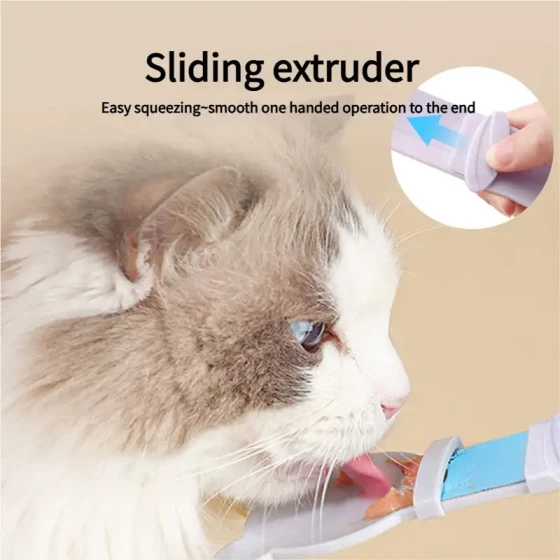Kitten 14-Day Survival Critical Period_Analysis of Kitten Survival Rate Two Weeks After Feeding
For newborn kittens just entering this world, the first two weeks of life are undoubtedly a crucial "checkpoint period." Successfully passing through this time significantly improves the kittens’ survival rate. This critical period is commonly called the "Kitten 14-Day Survival Critical Period" because, within these short two weeks, they must overcome multiple challenges such as temperature regulation, nutrient absorption, and immune system establishment.

Why are the first 14 days of life so critical?
Newborn kittens are very fragile, like delicate seedlings just sprouting, requiring careful external care to thrive. Their bodily functions are not yet fully developed:
- Poor temperature regulation: Kittens cannot maintain their own body temperature and are prone to hypothermia (low body temperature). A normal kitten’s body temperature should be between 35-37℃. Without warmth from their mother or artificial heating, they easily face life-threatening hypothermia.
- Immature immune system: At birth, they rely primarily on the colostrum (usually produced within 24-48 hours after birth) from the mother’s milk to acquire maternal antibodies and establish an initial immune barrier. Without sufficient colostrum intake or if the mother’s immunity is weak, kittens will have very poor disease resistance.
- Fragile digestive system: Kittens can only digest mother’s milk or specialized kitten milk formula and cannot absorb other foods. Improper feeding can easily cause digestive issues leading to dehydration and malnutrition.
- Limited mobility and senses: They are born with their eyes closed and ears unable to hear, completely dependent on the mother for movement. This means they cannot actively seek food or safe places, fully relying on maternal care.
Key factors affecting the survival rate of kittens in the first two weeks
Multiple factors jointly determine the kitten’s survival chance in the first two weeks:
- Mother cat’s health and maternal care: A healthy, experienced, and attentive mother cat is the greatest guarantee for kitten survival. The mother provides warmth, cleanliness, nursing, and stimulation for excretion. If the mother is weak, inexperienced, or refuses to care for the kittens, their situation becomes very dangerous.
- Timely acquisition of colostrum: Colostrum is rich in antibodies and is the main source of early immunity for kittens. Kittens who fail to get colostrum soon after birth face a much higher risk of infection.
- Environmental temperature and humidity: Kittens need a warm, dry environment. Too low temperature causes hypothermia; too high can cause dehydration. Suitable temperature should be maintained at 29-32℃ in the first week, reduced to about 27℃ in the second week.
- Proper artificial feeding: For kittens without maternal care, the quality of artificial feeding is crucial. Specialized kitten milk powder must be used as per instructions, with correct feeding posture and frequency (usually feeding every 2-4 hours). Insufficient or excessive feeding, improperly prepared formula, and unsuitable nipple hole size can all cause problems.
- Hygiene conditions: Kittens have poor resistance and require clean living conditions to reduce the chance of bacterial and viral infections.
- Congenital diseases or defects: Some kittens may be born with health issues, which also affect survival.
Analysis of kitten survival rate two weeks after feeding
If the kitten successfully passes the first 14 days of life, it usually has:
- Eyes and ears starting to open and function: Around 10-14 days after birth, kittens’ eyes gradually open and hearing begins to develop. This means they are no longer completely passive and start perceiving their surroundings.
- Improved temperature regulation: Although still needing a warm environment, their ability to regulate body temperature is better than at birth.
- Stable weight gain: Healthy kittens gain 10-15 grams per day. Maintaining steady weight gain in the first two weeks usually indicates good nutrition intake.
- Enhanced activity: Kittens start trying to crawl and explore a limited range.
Kittens that survive the first two weeks see a significant increase in survival rate. This is because they pass through the most vulnerable early stage prone to environmental impact and disease infection, with bodily functions gradually maturing. However, this does not mean they are completely safe. Upcoming challenges include:
- Weaning adaptation: Around 3-4 weeks of age, kittens begin to try solid weaning foods. Smooth transition to solid food is crucial for their nutrition.
- Socialization and learning: At this stage, kittens start interacting with littermates, the mother cat, and humans, learning basic behaviors and social skills.
- Vaccinations: From 6-8 weeks, kittens need timely vaccinations to build immunity against common infectious diseases.
- Parasite prevention: Regular deworming is also important to protect kitten health.
Therefore, although the first two weeks are the most dangerous period, subsequent scientific feeding, health management, and environmental protection are equally vital for the kitten’s long-term survival and health.
How to improve the survival rate of kittens in the first two weeks?
For kittens requiring artificial feeding intervention, the following are especially critical:
- Provide stable warmth: Use pet-specific heating pads (set to proper temperature and covered with a blanket to avoid burns), hot water bottles (regularly replaced to maintain temperature), or place kittens in a warm box or nest covered with a soft blanket. Ensure kittens can freely move away from the heat source to prevent overheating.
- Use professional kitten milk powder: Never substitute cow’s milk or other animal milk for kitten milk powder, as different compositions can cause diarrhea. Strictly prepare the formula according to instructions, avoiding overly thin or thick mixtures.
- Feed small amounts frequently: Newborn kittens have very small stomach capacity and need frequent feeding. Feed both day and night, usually no longer than 4 hours apart. As kittens grow, feeding intervals can be lengthened appropriately.
- Stimulate excretion: Kittens cannot defecate or urinate by themselves in the first weeks; manual stimulation is needed. After each feeding, gently wipe their anus and genital area with a warm, damp cloth or cotton ball to mimic the mother cat’s licking until they finish excreting.
- Monitor kitten condition: Watch for mental state, body temperature, weight gain, appetite, and excretion. If kittens show lethargy, poor appetite, persistent crying, diarrhea, hypothermia, or fever, seek veterinary help immediately.
- Maintain a clean environment: Regularly change bedding, clean bottles and nipples, and keep the kitten’s living area sanitary.
Frequently Asked Questions
- Q: How often should newborn kittens be fed?
- A: In the first week, feed usually every 2-3 hours, including nighttime. As kittens grow, intervals can gradually extend to 3-4 hours.
- Q: How to tell if a kitten is full?
- A: A full kitten usually stops sucking, has a round belly, and then quiets down to sleep. If not full, it may keep searching or cry restlessly.
- Q: What is a kitten's normal body temperature?
- A: In the first week, kittens’ normal temperature ranges around 35-37℃, gradually approaching adult cat temperatures (37.8-39.2℃).
- Q: Why does a kitten keep crying?
- A: Continuous crying may be due to cold, hunger, need to eliminate, or discomfort. Check each cause and meet needs promptly. If none apply and crying persists, the kitten may be ill and requires a veterinarian.
- Q: When can kittens be weaned?
- A: Usually at 3-4 weeks old, kittens start showing interest beyond liquid food. They can be gradually introduced to kitten weaning mousse or softened kitten kibble soaked in formula, transitioning to solid food.
Summary
The first 14 days of a kitten’s life are a critical period determining survival. Their bodily fragility and dependence on the external environment make this time very challenging. Careful maternal care, timely colostrum intake, appropriate environmental temperature and humidity, and professional, meticulous artificial feeding when necessary directly affect the kitten’s fate. Successfully passing the first two weeks significantly increases their survival chances, but ongoing scientific feeding and comprehensive health management remain essential for healthy growth. Each small life that struggles to survive and ultimately thrives in these early days owes its existence to detailed care and effort behind the scenes.





